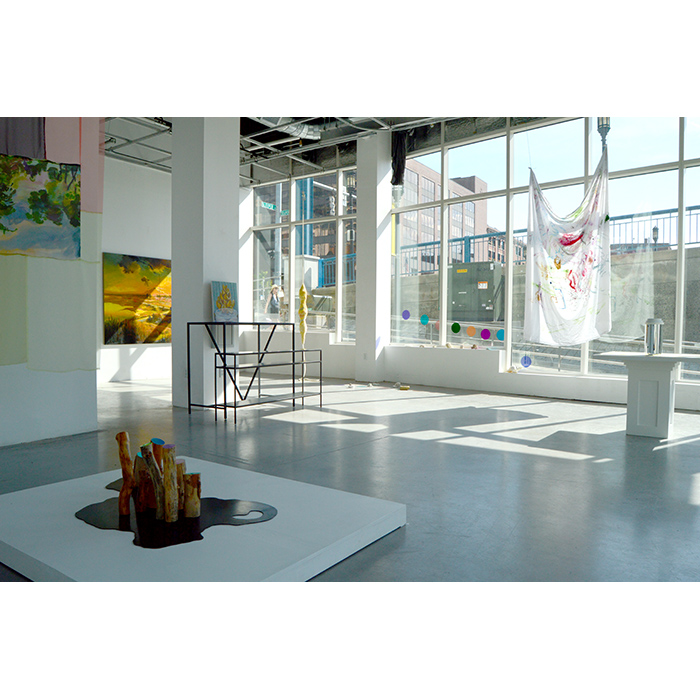Sun Worship and Solar Machines
Assemblage, FPAC at Envoy Hotel
Boston, Massachusetts
Saturday 9/01 to Saturday 10/06 2018
opening reception: Thursday 9/6, 6:00-8:00 PM
Vanessa Albury
Dave J Bermingham
Jesse Bransford
Hedwig Brouckaert
Jonathan Cowan
Sean Downey
Marthe Ramm Fortun
Alison Kudlow
Jac Lahav
Lauren Luloff
Maria Molteni
Wilhelm Neusser
Zoe Pettijohn Schade
David Shaw
Elisa Soliven
Jo-ey Tang
A meditation on the sun, produced by Matthew Freeman, will be presented in the gallery on Saturday September 15 at 2:00 PM.
Curated by Kari Adelaide and Max Razdow
No matter the mythology, there’s a full list of solar deities, each with its own radiance. Though we avert our gaze from the sun, we are watching for the glimmer of the fish scale and fernseed, waiting for its presence on water, wading wider and deeper then coming again to the reflective surface. From dawn until sun-down, we put on charms with golden splendor, wishing for pity from the sun-gods, seeking deified brightness. We trace the gold fleur-de-lis on the solar crown, and seek out the zenith and the nadir, height and illumination, disk symbolism and solar flare.
Apollo, for Nietzsche, embodies the solar by an ability to preside over fantasy. The sun is linked to a principle of individuation which enables the division of one form from an intractable procession of many. This incisiveness provides clarity, and we bask in it, and yet we wish to harness it.
Augustine Mouchot’s 19th century “sun machine” was described as a “mammoth lampshade, with its concavity pointed skyward” (1). Victorian engravings depict an array being observed by onlookers as the sun machine struggles to power a printing press. Technology moves ever forward, and the sun moves across the sky without regard, but as our companion. Mina Loy called it “my friend,” and said “the Sun-god painted on the ceiling – darkened to the removal of the light.”
1. Langley, S.T., (1869). The Sun A Source of Power. Scientific American, 67.
